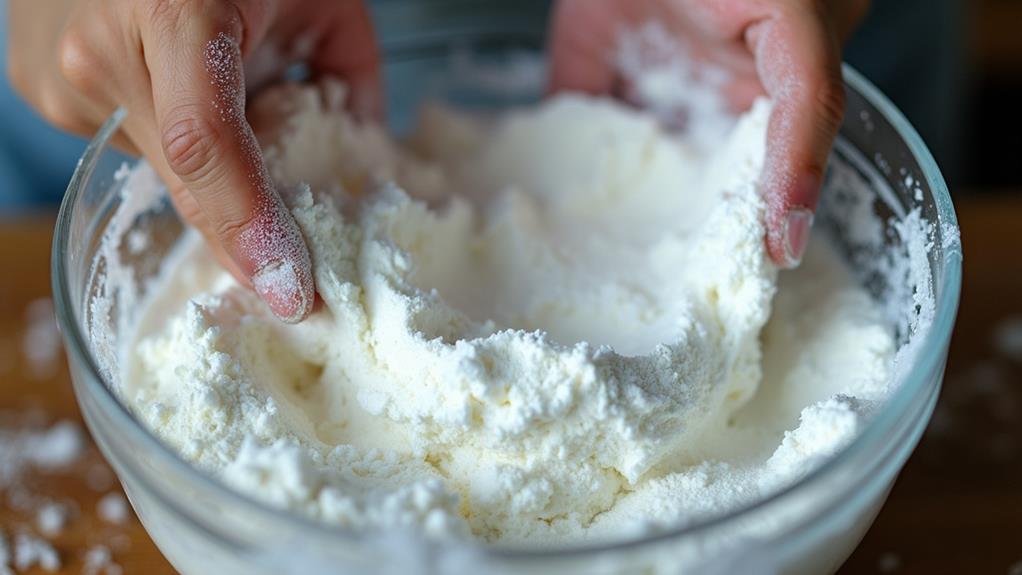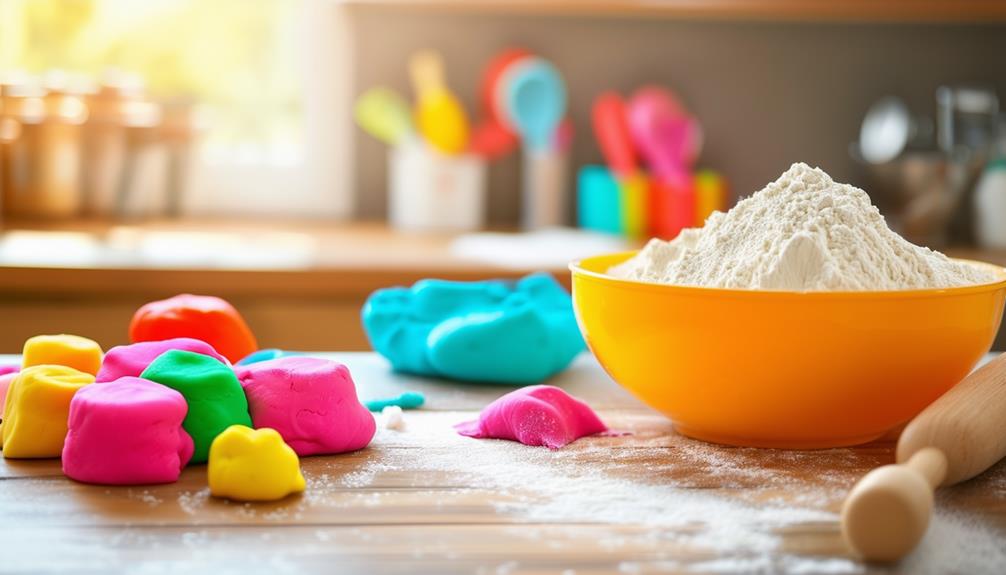What Is Kinetic Sand Made Of?
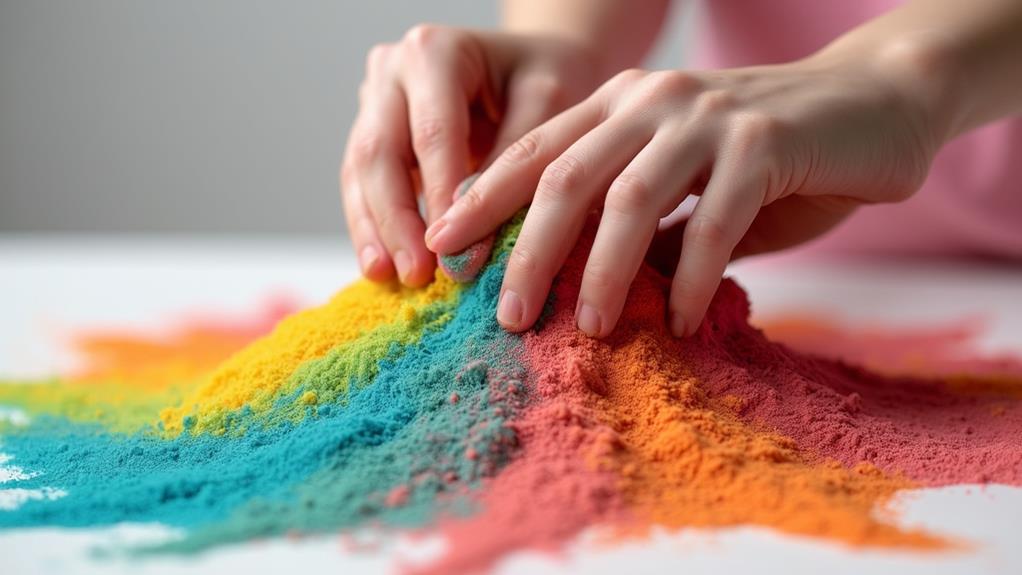
Ever wondered what gives kinetic sand its unique, mesmerizing texture? It's all about the combination of ingredients. Kinetic sand consists of 98% fine sand and 2% polydimethylsiloxane, a type of silicone that makes it incredibly moldable and easy to shape. This blend ensures the sand doesn't dry out or create a mess, making it perfect for hours of play. But there's more to how these components interact and what makes kinetic sand safe for kids. Curious about the manufacturing process and safety details?
Composition of Kinetic Sand
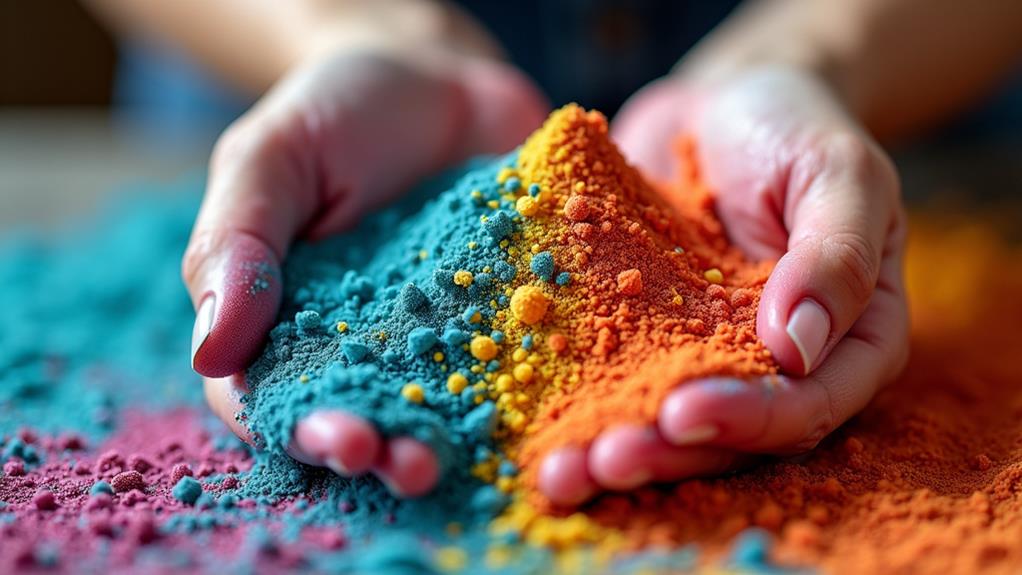
The allure of Kinetic Sand lies in its fascinating composition. Comprising 99% natural sand, it offers a familiar, grainy texture reminiscent of beach sand. The magic, however, is in the remaining 1%, which consists of polydimethylsiloxane, a type of silicone. This small yet powerful ingredient transforms regular sand into a moldable material that feels almost like wet beach sand but doesn't dry out or create a mess.
Kinetic Sand is easy to shape and reshape, making it ideal for arts and crafts activities. It is designed to be non-toxic and hypoallergenic, ensuring safety for children aged three and older. The formulation is free from wheat, gluten, casein, and common food allergens, making it suitable for most kids.
Kinetic Sand undergoes rigorous safety testing and quality control to meet legal safety standards. However, while it is made without direct allergens, the production environment cannot guarantee a completely peanut-free atmosphere. Dive in and enjoy the creative possibilities this unique sand offers!
Key Ingredients
Kinetic Sand's unique properties arise from two primary ingredients: ultra-fine grain sand and dimethicone. The sand, comprising 98% of the mixture, offers a familiar gritty texture but is much finer than regular play sand. This ultra-fine grain enables Kinetic Sand to hold detailed shapes, making it ideal for creative play. Notably, the sand is allergen-free, eliminating concerns related to wheat, gluten, or casein.
Dimethicone, a type of silicone oil, constitutes the remaining 2% of Kinetic Sand. This ingredient imparts a non-toxic and slippery feel, essential for its behavior as a non-Newtonian fluid. Under pressure, the sand behaves like a solid, maintaining its shape. When left undisturbed, it flows like a liquid. This dual nature makes Kinetic Sand both fun and versatile.
Thanks to these two key ingredients, Kinetic Sand is moldable and retains its shape temporarily. Once manipulation ceases, it reverts to a loose, flowing state, ready for the next creation.
Manufacturing Process
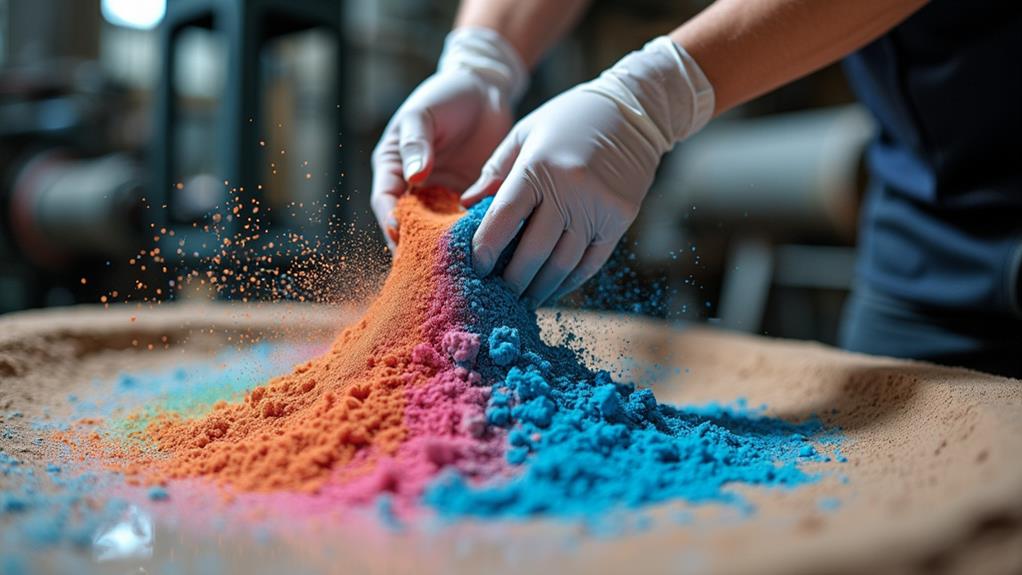
The manufacturing process of kinetic sand involves combining ultra-fine grain sand with dimethicone, a type of silicone oil. This coating imparts a moldable and easily manipulable texture to the sand. Additionally, stringent quality control measures ensure that the final product is consistent, safe, and meets high safety standards.
Key Ingredients Used
Crafting kinetic sand involves a fascinating blend of simple yet effective ingredients. At its core, the sand recipe consists of 98% ultra-fine grain sand and 2% dimethicone. This specific type of sand is chosen for its fine texture, which allows it to blend seamlessly with the dimethicone. The dimethicone, a silicone-based compound, is what gives kinetic sand its unique, moldable properties. You might recognize this ingredient from everyday products like diaper rash creams, where it's prized for its minimal toxicity and safety.
When the sand particles are coated with dimethicone, they transform into a non-Newtonian fluid. This means the kinetic sand behaves like a solid under stress but flows like a liquid when the pressure is released. This characteristic makes it perfect for endless creative play and easy cleanup, as it retains its shape when molded but collapses back into loose sand.
Key ingredients used in kinetic sand include:
- 98% ultra-fine grain sand
- 2% dimethicone
- Hypoallergenic components
- Allergen-free materials
These ingredients ensure that kinetic sand is safe and enjoyable for children aged 3 years and older, making it a fantastic addition to any playtime activity.
Production Techniques Explained
Understanding the composition of kinetic sand enhances appreciation for its unique properties. Kinetic sand consists of 98% ultra-fine grain sand, prized for its smooth texture and playability, particularly among young children. The remaining 2% is polydimethylsiloxane, a silicone oil that imparts the sand's distinctive moldable characteristics.
The production of kinetic sand begins with the selection of high-quality natural sand. This sand undergoes thorough cleaning and drying to eliminate impurities. Each sand particle is then meticulously coated with dimethicone, a silicone compound. This coating is crucial, enabling the sand to compact when pressed and return to a loose state when left undisturbed.
The coated sand is carefully mixed to ensure uniform distribution of the silicone oil, guaranteeing consistent behavior across all sand grains and providing a pleasurable sensory experience. Given the importance of safety, particularly for children, the final product undergoes rigorous safety testing to confirm it is non-toxic and safe for play. This meticulous manufacturing process ensures that kinetic sand is both enjoyable and safe to use.
Quality Control Measures
To ensure the highest quality of kinetic sand, comprehensive quality control measures are implemented throughout the manufacturing process. These measures ensure the product is safe, consistent, and enjoyable for users. Internal testing programs exceed legal safety requirements, ensuring that each batch of kinetic sand meets industry standards for safety and performance.
Here are some key quality control measures:
- Batch Testing: Each batch of kinetic sand undergoes rigorous testing to ensure consistency in texture and quality, maintaining its unique playability.
- Contamination Prevention: Manufacturing facilities follow strict guidelines to prevent contamination, ensuring the product remains free from allergens such as gluten and nuts.
- Ingredient Sourcing: All ingredients, including natural sand and silicone oil, are sourced from reputable suppliers to ensure product safety and reliability.
- Safety Compliance: The production process includes checks to ensure that any added food coloring or other components meet stringent safety standards for children's products.
Safety Information
Kinetic sand is non-toxic but can pose a choking hazard for young children. Ingesting large quantities may lead to serious health issues like gastrointestinal obstruction, with symptoms such as constipation and vomiting. Always supervise children during play and teach them not to eat the sand. If ingestion occurs, contact Poison Control immediately for assistance.
Choking Hazard Details
Kinetic sand is an enjoyable and engaging toy, but it poses a significant choking hazard for children under three years old due to its small particles. Young children often put objects in their mouths, increasing the risk of choking. While kinetic sand is non-toxic, ingestion can still cause severe health issues.
To ensure the safety of your children, follow these precautions:
- Supervision: Always supervise young children while they play with kinetic sand.
- Age-appropriate toys: Keep kinetic sand out of reach of children under three years old.
- Clear warnings: Pay attention to packaging warnings about choking hazards.
- Safe play area: Designate a specific area for playing with kinetic sand to minimize the risk of ingestion and choking.
Ingestion Health Risks
Ingesting kinetic sand poses several health risks, particularly for small children. Composed of 98% ultra-fine grain sand and 2% dimethicone—an ingredient also found in products like diaper rash creams—kinetic sand is not meant for consumption. The primary risk is choking, especially in young children who might accidentally ingest it.
Ingesting a significant amount of kinetic sand can lead to severe issues such as constipation or gastrointestinal obstruction. Symptoms may include bloating, lack of bowel movement, and vomiting. While small amounts often pass without harm, they might alter stool color due to the dyes in the sand, which can be concerning.
If ingestion occurs, contact Poison Control for guidance, as they can provide specific advice. Symptoms usually do not develop after ingestion, but it is better to be cautious. Always supervise young children during play to mitigate these risks, as kinetic sand is not intended for eating.
DIY Kinetic Sand

Making your own kinetic sand at home is both enjoyable and straightforward, allowing for customization of its texture and appearance. By combining basic ingredients, you can create a version of kinetic sand that mimics the store-bought kind. Here's a simple recipe you can follow:
- Ingredients:
- 2.5 cups of fine sand
- 1.5 cups of cornstarch
- 0.5 cup of oil
- 1 tablespoon of dish soap for enhanced texture and pliability
- Optional Customizations:
- Food coloring: Add a few drops to achieve your desired color.
- Glitter: Sprinkle in some glitter for a sparkly effect.
- Essential oils: A few drops can add a pleasant scent.
- Extra cornstarch or oil: Adjust the amounts to fine-tune the consistency.
- Instructions:
- Mix the fine sand, cornstarch, and oil in a large bowl.
- Add the dish soap to improve the texture and make the sand more moldable.
- If using optional ingredients, add them now.
- Mix thoroughly until all ingredients are well-combined.
Enjoy the process and the endless possibilities for customization with your homemade kinetic sand creations!
Storage Tips
Proper storage is essential to maintain the quality of your homemade kinetic sand. To keep it in the best condition, store the kinetic sand in an airtight container to preserve its moisture and prevent it from drying out. Be sure to place the container in a cool, dry place away from direct sunlight, as exposure to sunlight can degrade the sand's unique texture.
For an additional measure, refrigerate your kinetic sand to significantly extend its shelf life, ensuring it remains fresh and moldable for longer periods. Regularly inspect the stored sand for any unusual odors, as this may indicate it's time to dispose of it.
If your kinetic sand becomes dry, you can easily rehydrate it by adding a few drops of water and kneading it until it returns to its original consistency. Add water gradually to avoid over-saturating the sand, as it's easier to add more water if needed.



